
Warfarin-NSAID Bleeding Risk Calculator
Check Your Risk
This tool estimates bleeding risk when combining warfarin with NSAIDs based on published medical research.
Key Information
Understanding the risks can help you make safer choices.
The combination of warfarin and NSAIDs multiplies bleeding risk significantly.
This isn't just theoretical—it's a well-documented, deadly interaction.
Risk Multipliers
| NSAID | Risk Increase |
|---|---|
| Naproxen | 4.1x |
| Diclofenac | 3.3x |
| Ibuprofen | 1.79x |
| Celecoxib | Similar to others |
Your Risk Assessment
Select an NSAID and click "Calculate Risk" to see your increased bleeding risk.
Every year, millions of people take warfarin to prevent dangerous blood clots. At the same time, countless others reach for ibuprofen or naproxen to ease a headache, back pain, or arthritic stiffness. What most don’t realize is that combining these two common medications can turn a simple pain reliever into a silent killer. The risk isn’t theoretical-it’s well-documented, deadly, and preventable.
Why This Combination Is So Dangerous
Warfarin works by blocking vitamin K, which your body needs to make clotting factors. Without those factors, blood takes longer to clot-good if you’re at risk for stroke or clots, dangerous if you get cut or bruised. NSAIDs like ibuprofen, naproxen, and celecoxib do something different but equally risky: they stop platelets from sticking together. Platelets are the first responders when you bleed. If they can’t do their job, even a small nick can turn into a serious bleed. When you take both, it’s like cutting two safety lines on a parachute. Warfarin slows down the clotting process. NSAIDs stop the platelets from forming the initial plug. Together, they don’t just add risk-they multiply it. Studies show this combo increases your chance of a major bleed by more than twofold. That’s not a small uptick. That’s a dramatic, life-threatening jump.Not All NSAIDs Are Created Equal
Many assume all over-the-counter painkillers are the same. They’re not. The risk varies wildly depending on which NSAID you take.- Naproxen raises bleeding risk by 4.1 times compared to warfarin alone.
- Diclofenac? That’s 3.3 times higher.
- Ibuprofen? Still dangerous-1.79 times higher.
- Even celecoxib, marketed as a "safer" COX-2 inhibitor, carries nearly the same risk as older NSAIDs.
Where the Bleeding Happens-and How Bad It Gets
Most people think of GI bleeding when they hear "warfarin and NSAIDs." And yes, gastrointestinal bleeding is the most common. It’s 2.24 times more likely with this combo. But that’s only part of the story.- Intracranial bleeding (bleeding in the brain) jumps by 3.22 times.
- Pulmonary bleeding increases by 1.36 times.
- Urinary tract bleeding goes up by 1.57 times.
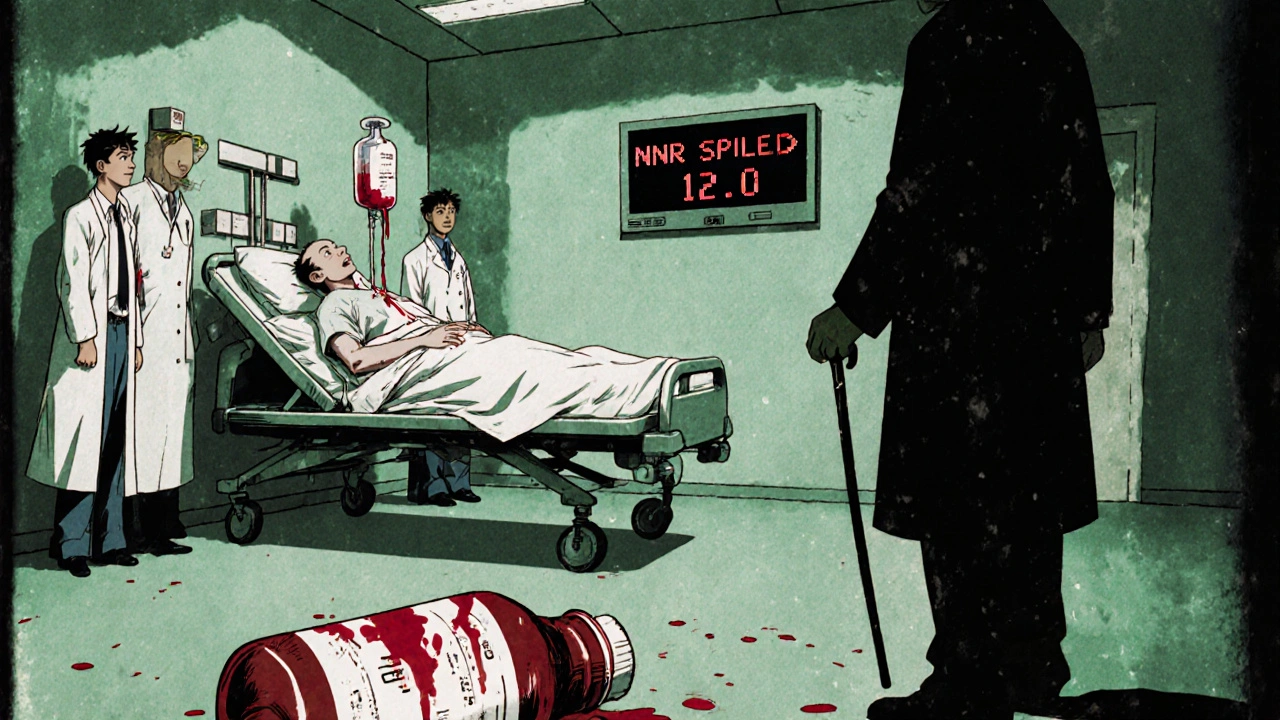
NOACs Aren’t a Safe Escape
Many patients assume switching from warfarin to a newer anticoagulant like apixaban, dabigatran, or rivaroxaban makes them safe to take NSAIDs. It doesn’t. Studies show NSAIDs increase bleeding risk with all oral anticoagulants. Apixaban might be slightly safer than warfarin in NSAID users, but the risk is still significantly higher than if no NSAID was taken. Dabigatran shows lower bleeding risk than warfarin when combined with NSAIDs-but that doesn’t mean it’s safe. Rivaroxaban? Same risk as warfarin. The idea that "newer is safer" here is dangerously misleading. The mechanism isn’t about vitamin K. It’s about platelets. And all anticoagulants, old or new, don’t fix that. NSAIDs still disable platelets. The bleeding risk remains.Real-World Consequences
The FDA’s adverse event database recorded over 1,800 bleeding events linked to warfarin-NSAID combinations between 2015 and 2020. Sixty-two percent of those were GI bleeds. But behind every number is a person who didn’t know the danger. Patients often don’t tell their doctors they’re taking OTC painkillers. A University of Michigan study found that in 68% of bleeding cases, patients hadn’t disclosed NSAID use. Why? Because they think "it’s just Advil." Or they take it once a week for a sore knee. They don’t realize that even occasional use can trigger a bleed. Worse, many electronic health records still don’t flag this interaction. In over 40% of U.S. hospitals, the system won’t warn a doctor who prescribes naproxen to a warfarin patient. That’s not just a gap-it’s a failure.What You Should Do Instead
The safest answer? Avoid NSAIDs entirely if you’re on warfarin. But if you have chronic pain and need relief, here’s what works:- Acetaminophen (Tylenol) is the top alternative. It doesn’t affect platelets or INR. Use it within the safe daily limit (no more than 3,000 mg unless directed).
- Topical pain relievers like diclofenac gel or menthol creams deliver relief without systemic effects. They’re growing in popularity among anticoagulant users.
- Physical therapy and heat/cold therapy can reduce reliance on pills.
- Low-dose aspirin? Don’t assume it’s safer. It’s also an NSAID and increases bleeding risk. Avoid unless prescribed for heart protection.

What If You Absolutely Must Use an NSAID?
Some doctors, reluctantly, will allow a short course of NSAID if no alternatives exist. If you’re in this situation, follow these rules:- Use the lowest effective dose for the shortest time possible.
- Avoid naproxen and meloxicam. If you must use one, ibuprofen is the least risky-but still risky.
- Get your INR checked 3 to 5 days after starting the NSAID.
- Check again weekly while taking it.
- Ask your doctor about a proton pump inhibitor (like omeprazole) to protect your stomach lining.
- Know the signs of bleeding: black or tarry stools, bright red blood in stool, unusual bruising, dizziness, headaches, coughing up blood, or sudden swelling.
The Bigger Picture
This isn’t just about individual choices. It’s a systemic problem. About 3.1 million Americans take warfarin. Seventeen million use NSAIDs monthly. Two to three million are combining them. That’s a public health crisis hiding in plain sight. The economic cost? Over $1.8 billion a year in hospital bills, transfusions, and lost workdays. And despite decades of warnings, nearly half of warfarin patients still get NSAID prescriptions each year. The good news? Between 2015 and 2022, co-prescribing dropped by 27%-mostly because more people switched to NOACs. But here’s the twist: NSAID use with NOACs rose by 35% during that same time. People think, "I’m not on warfarin anymore, so I’m safe." They’re wrong.Final Takeaway
Warfarin and NSAIDs don’t just interact. They collide. The result is a bleeding risk that’s not just higher-it’s catastrophic. No amount of monitoring makes this combo truly safe. No "low dose" or "short term" makes it acceptable. The only safe approach is to avoid NSAIDs completely. If you’re on warfarin, talk to your doctor about alternatives. Don’t wait for a bleed to happen. Don’t assume your pharmacist or OTC label has your back. This interaction is deadly, predictable, and preventable. Your life depends on knowing the truth-and acting on it.Can I take ibuprofen with warfarin if I only use it once in a while?
No. Even occasional use of ibuprofen with warfarin increases your bleeding risk by nearly 80%. Platelet function is impaired with every dose, and the effect can last for days. There’s no safe threshold. If you need pain relief, choose acetaminophen instead.
Is aspirin safer than other NSAIDs when taking warfarin?
No. Aspirin is also an NSAID and blocks platelet function. It increases bleeding risk just like ibuprofen or naproxen. If you’re on warfarin and were prescribed low-dose aspirin for heart protection, don’t stop it without talking to your doctor-but don’t add other NSAIDs on top of it.
Do newer blood thinners like Eliquis or Xarelto make NSAIDs safe?
No. While NOACs like apixaban and rivaroxaban have fewer drug interactions than warfarin, they don’t protect you from NSAID-induced bleeding. NSAIDs still impair platelets, and that’s the main danger. Bleeding risk remains significantly higher with any NSAID, regardless of which anticoagulant you’re on.
What should I do if I accidentally took an NSAID while on warfarin?
Call your doctor or anticoagulation clinic right away. Don’t wait for symptoms. Get your INR checked within 24 to 48 hours. Watch for signs of bleeding: unusual bruising, dark stools, dizziness, or headaches. If you feel weak or faint, go to the ER immediately.
Why don’t pharmacies warn me about this interaction?
Many pharmacy systems don’t flag NSAID-warfarin interactions because they’re not always programmed to. Some warn about warfarin and antibiotics or supplements, but miss NSAIDs. Always ask your pharmacist directly. Don’t rely on automated alerts.
Are there any NSAIDs that are safe with warfarin?
No. All NSAIDs-whether prescription or over-the-counter, traditional or COX-2 inhibitors-increase bleeding risk when taken with warfarin. The degree varies, but none are safe. Acetaminophen, topical treatments, or non-drug therapies are the only recommended alternatives.
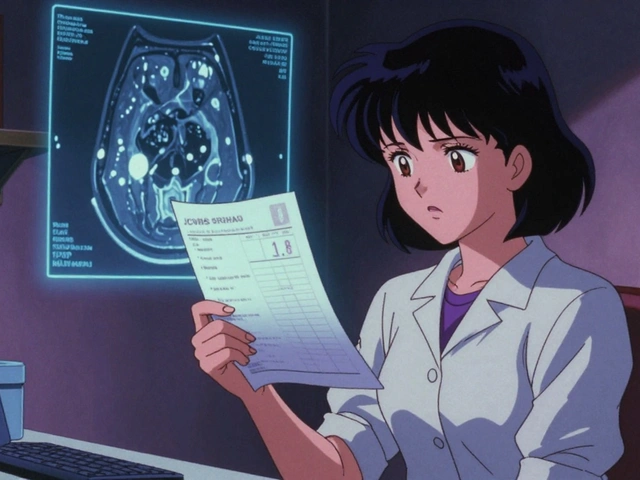
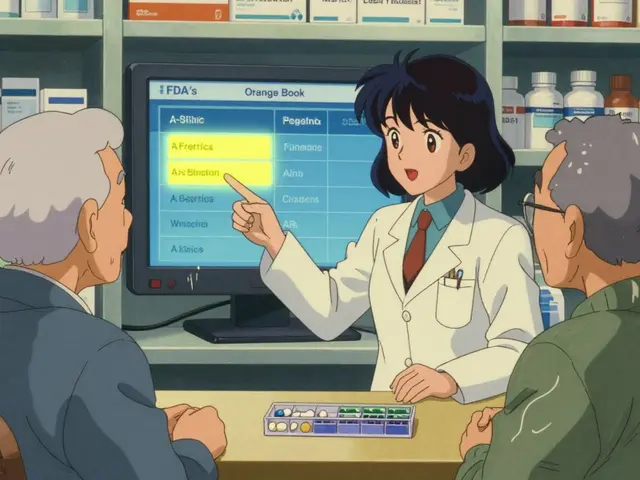
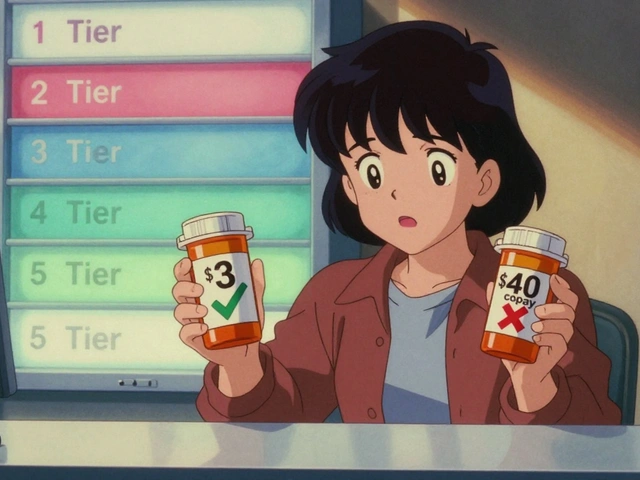

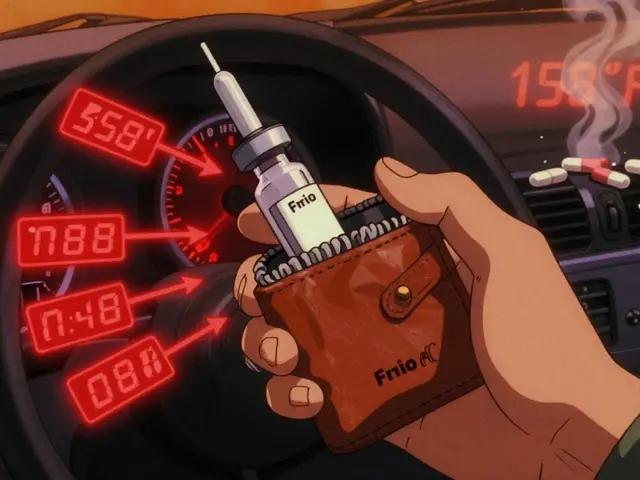
13 Comments
Been on warfarin for 7 years. Took ibuprofen once for a bad back spasm. Ended up in the ER with a GI bleed. No joke. My INR was 9.5. Docs said I got lucky it wasn't a stroke. Now I keep Tylenol in every room. Don't be stupid.
bro i just took naproxen for my knee and didnt think twice
now im scared to move
like what if i sneeze and start bleeding out
why does no one talk about this
my pharmacist didnt even blink
This is an essential public health message that deserves far more attention. The data presented here is not merely anecdotal-it is statistically robust and clinically significant. Physicians and patients alike must be educated on the synergistic bleeding risks posed by combining anticoagulants with NSAIDs. The fact that electronic health records routinely fail to flag these interactions is a systemic failure that must be addressed at the policy level. Thank you for compiling this comprehensive overview.
I had no idea this was such a big deal. My grandma’s on warfarin and she takes Advil every Sunday for her arthritis. I’m going to sit her down this weekend and make her switch to the gel. She’s stubborn but she listens to me. We can save lives with simple changes.
How is this even a topic? Anyone with a basic understanding of pharmacology knows NSAIDs inhibit platelet aggregation. The fact that laypeople are surprised by this suggests a catastrophic failure in medical literacy. Also, acetaminophen isn’t risk-free-liver toxicity is a real concern, especially in the elderly. But I suppose that’s too nuanced for Reddit.
Let me paint you a picture: warfarin is a scalpel, NSAIDs are a sledgehammer. Together? You're not managing risk-you're playing Russian roulette with your internal organs. The FDA database has over 1,800 incidents. That's not a glitch. That's a massacre. And the worst part? People think "I only take it once a week" like it's a coffee habit. You're not sipping espresso-you're poking your arteries with a fork. And don't even get me started on the COX-2 placebo effect. Celecoxib? Same damn bleeding risk. The system is gaslighting you with brand names and "safer" labels. Wake up.
So if I'm on Eliquis, and I take ibuprofen for a headache, how long should I wait before checking my INR? Or is there even a point? I'm confused because I thought NOACs didn't need monitoring.
If you're taking warfarin and still using OTC painkillers you're not just irresponsible-you're a danger to yourself and the healthcare system. You're wasting hospital beds, draining resources, and risking your life because you're too lazy to stretch or use ice. People die from this. And no, your "once a month" excuse doesn't count. There's no safe dose. Stop making excuses and take responsibility.
THIS IS WHY WE NEED BETTER PATIENT EDUCATION. I work in a clinic and I see this every week. Patients think "it's just Advil" like it's water. We need posters in pharmacies. We need mandatory pop-ups when you fill a warfarin script. We need pharmacists to actually talk to people. This isn't rocket science. It's basic safety. Let's stop pretending it's okay to gamble with bleeding risks. We can fix this if we stop being passive.
My doc told me to avoid NSAIDs. I did. Switched to CBD oil. Works okay for pain. No bleeding. No drama. Just chill.
So if I take naproxen once a year for a migraine, am I basically signing my death warrant? Like... what's the actual chance I'll bleed out? Just curious. Not trying to be a dick.
Actually, the real issue is that doctors overprescribe warfarin in the first place. NOACs are way better. And if you're on one of those, you're probably fine with occasional NSAIDs. This whole post feels like fearmongering to push people toward Tylenol, which is just as toxic if you're an alcoholic. Stop scaring people with cherry-picked stats.
Thank you for this. My uncle passed from a GI bleed from this combo. I didn't know until it was too late. I'm sharing this everywhere. If one person reads this and swaps their ibuprofen for Tylenol, it's worth it. ❤️